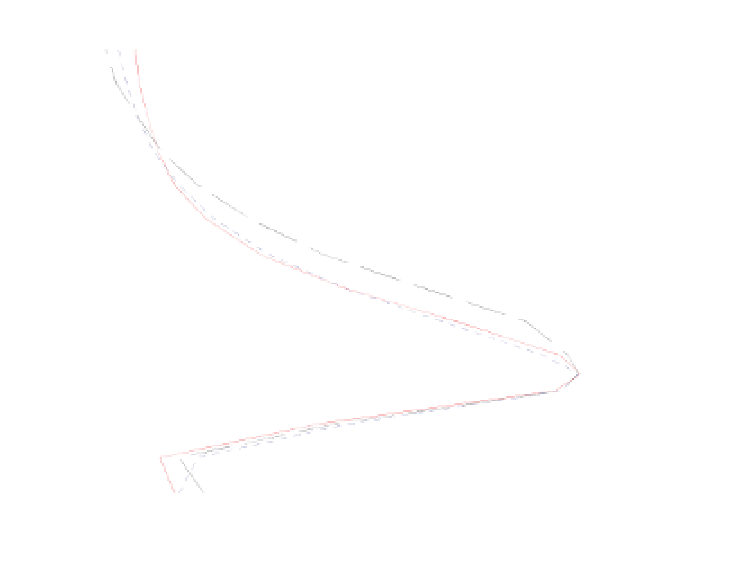Global Positioning System Reference
In-Depth Information
800
GPS
IRI-2007
Ionosonde
700
600
500
400
300
200
100
0
2
4
6
8
10
Electron density (10
11
el/m
3
)
Fig. 11. Comparison of the electron density profiles derived from the ground-based GPS
tomography reconstruction (solid line), ionosonde observation at Anyang stations (37.39ºN,
126.95ºE) (dot line) and IRI-2007 estimation (dashed line) at 9:00 UT on 1 October 2003
As the F2-layer peak electron density value (denoted as NmF2, proportional to the square of
the F2 layer critical frequency foF2) is of great influence on the shape of the ionospheric
electron density profile Ne(h), and also probably related to various physical processes of
ionospheric activities as well as the F2-layer peak height (hmF2), the NmF2 and hmF2 are
essential parameters for monitoring ionospheric activities and understanding the nature of
the ionosphere. Although many studies of geomagnetic storms have been carried out in the
US and Europe (e.g. Foster et al. 2004; Yin et al. 2004; Goncharenko et al. 2007),
investigations on ionospheric behaviour to storms in Asia are relatively few due to a lack of
dense sets of GPS observations, etc. In this paper, the responses of the GPS-derived NmF2
and hmF2 to the super geomagnetic storm (20 November 2003) over South Korea using data
from the dense Korean GPS Network are described. First, ground-based dual-frequency
GPS observations are used to produce electron density profiles using the ionospheric
tomography technique, which are verified by independent ionosonde data. Then the
responses of the key ionospheric F2-layer parameters NmF2 and hmF2 to the 20 November
2003 geomagnetic storm are investigated over South Korea to gain insights into the effects of
different physical conditions and processes.
In the following, the 3-D ionospheric disturbances during the large November 20th 2003
geomagnetic storm are investigated and analyzed using GPS data in South Korea. The
geomagnetic storm Dst, Kp and AE indices on 20-21 November 2003 obtained from the
World Data Center in Kyoto (http://swdcdb.kugi.kyoto-u.ac.jp/) showed a strong
geomagnetic storm on November 20th, 2003 (Figure 2).





































































Search WWH ::

Custom Search